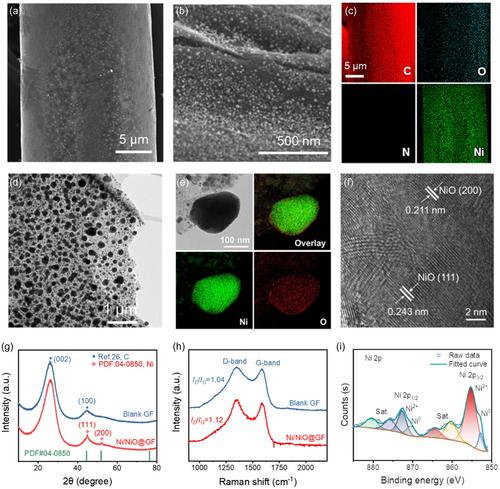Zinc bromine flow batteries (ZBFBs) are well suited for stationary energy storage due to their attractive features of high energy density and low cost. Nevertheless, the ZBFBs suffer from low power density and limited efficiency owing to the relatively severe polarization of the Br2/Br− redox couple. Herein, a three-dimensional (3D) hierarchical composite electrode based on core-shell Ni/NiO heterostructures anchored on graphite felt (Ni/NiO@GF) is designed to promote the kinetics of the Br2/Br− couple, so as to improve the power density and efficiency of the ZBFB. In this design, the highly conductive carbon felt and Ni cores provide a composite electrode with a 3D electron transporting framework to guarantee excellent electronic conductivity, while the NiO shells possess great absorption ability to Br2 and brilliant catalytic activity for the Br2/Br− redox reaction to reduce the electrochemical polarization. As a result, an enhanced ZBFB with Ni/NiO@GF electrode shows an outstanding energy efficiency of 86% at 20 mA cm−2 and can be operated at a current density of up to 160 mA cm−2 with a respectable energy efficiency of 67%. These results exhibit a promising strategy to fabricate catalytic electrodes for high-performance ZBFBs.

| 公司名称 | 产品信息 | 采购帮参考价格 | |
|---|---|---|---|
| 上海吉至 | zinc bromide |
Z17760
98%
|
¥15.00~¥68482.96 |
| 上海吉至 | ammonium chloride |
A45870
99.5%
|
¥16.00~¥50988.12 |
| 上海吉至 | ethyl alcohol |
E99940
99.5%
|
¥14.00~¥34800.90 |
| 上海吉至 | MEP |
F60990
97%
|
¥48.00~¥20295.00 |
| 阿拉丁 | Ni(NO3)2·6H2O |
98%
|
|
| 阿拉丁 | benzimidazole |
98.5%
|

